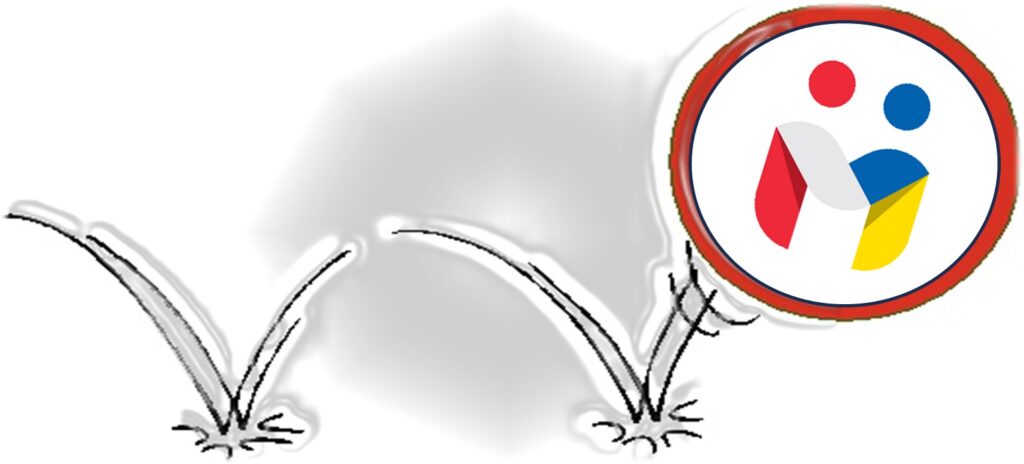
INTRODUCTION AND HOW TO USE THESE RESOURCES
What is trauma? Trauma is any horrible experience in which you might have: felt afraid for your life; or you were injured physically or sexually; or you were afraid you would be. Or, you may have witnessed a trauma or heard about it happening to someone you care about. Almost everyone lives through something traumatic in their life: the death of a loved one, illness, injury, accident, violence, sexual abuse, war, natural disasters, even global pandemics. Unfortunately, it is part of life.
This page contains some self-care tools, information, and resources to help you relax, bounce back from strong negative feelings, and move forward after trauma. Most of these resources were explained and demonstrated during the History, Healing and Hope tour. Not every tool works for every person (or for every occasion), so the idea is to try them and see what works for you. Practice when you aren’t feeling anxious and stressed, so they will work better for you when you are.
Most of the documents are in both English and Ukrainian. The You Tube videos are in English, but you can follow the instructions below to change the subtitles to Ukrainian if you prefer. The Guided Imagery audio is in English only. Try them and see what works for you. Play with them! If they work for you, then share them with your friends and family.
NOTE: The resources and tools on this page are NOT a substitute for professional medical and/or mental health care. Contact professional help if/when needed.
HOW TO CHANGE VIDEO SETTINGS FOR UKRAINIAN SUBTITLES
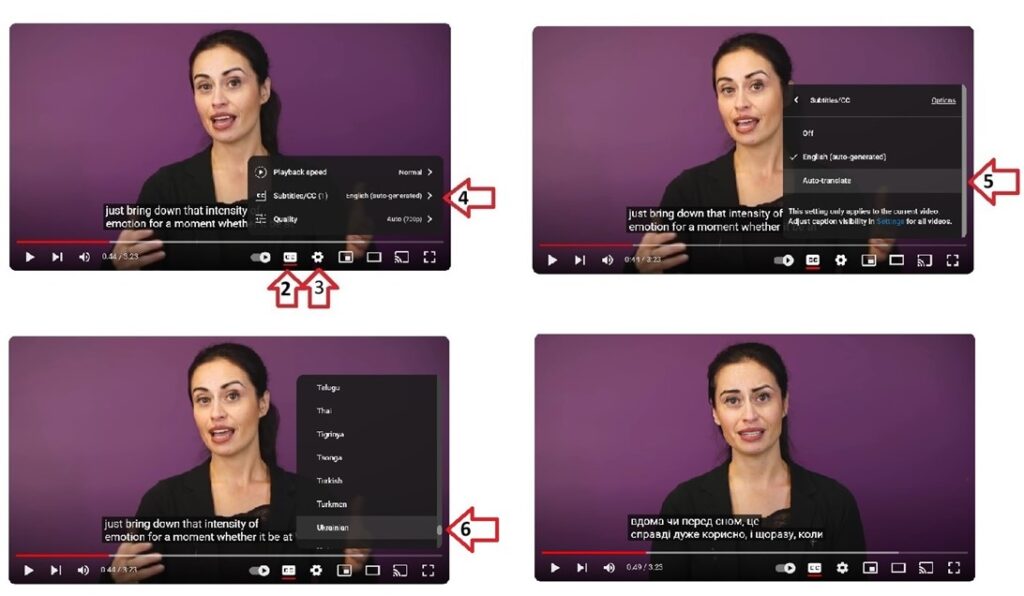
How to change captions from English to Ukrainian in You Tube videos:
Як змінити субтитри з англійської на українську у відео на You Tube:
1. Start the video you want to view.
Запустіть відео, яке хочете переглянути.
2. At bottom right of video, click on “closed caption” (CC box) to activate subtitles. They will appear in English.
У нижньому правому куті відео натисніть «закриті субтитри» (поле CC), щоб активувати субтитри.
Вони з’являться англійською мовою.
3. At bottom right of video, click on “settings” (gear wheel)
У нижньому правому куті відео натисніть «налаштування» (шестерня).
4. Select “subtitles”. Another menu will appear.
Виберіть «субтитри». З’явиться інше меню.
5. Select “auto translate”. Another menu will appear.
Виберіть «автоматичний переклад». З’явиться інше меню.
6. Scroll down menu and select “Ukrainian”.
Прокрутіть меню вниз і виберіть «Українська».
THE POSSIBILITY OF POSITIVE GROWTH AFTER TRAUMATIC EXPERIENCES
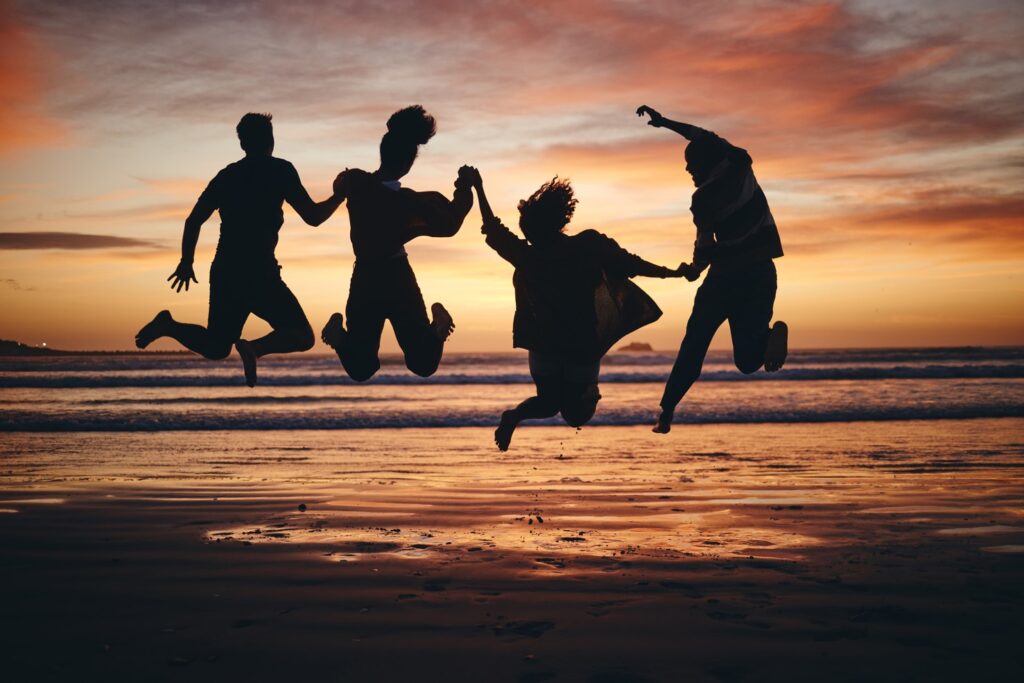
“In times of stress, crisis, or trauma, people often ask the question “What good can come of this?” Although it might appear that the answer is “Nothing”, at some point, we will be able to look back on this terrible time and how it has changed us. Almost always, those changes will include some good outcomes along with the bad.”1 It is possible to grow positively after terrible experiences. We can learn from what we experienced. We can allow it to make us a better person, and to build a better life for ourselves and our community.
How do you feel after a traumatic experience?
Everyone will respond differently to a traumatic experience. Most people have a lot of distress right after a trauma happens, but begin to feel better over time. For other people, the distress sticks around and they begin to have symptoms that really affect their lives. Experiencing strong emotions doesn’t mean you are weak or can’t handle hard things. Many very strong people experience distress after a traumatic experience – it is just part of being human. Although trauma can make people feel terrible, there are things you can do to help yourself. You can also talk to your parents about what you are feeling, and together, you can find ways to ask for help from professionals if you need it. Here is some basic information about trauma and how it can affect you:
1. Bouncing Back & Moving Forward, presentation given on the History, Healing, and Hope tour, for teens and adults (Ukrainian, English)
2. What is Trauma? Video for teens and adults by PsychHub. (In English, but can adjust settings for Ukrainian subtitles) https://www.youtube.com/watch?v=2KXtlIX_yUs
3. Effects of Trauma Youth Version, document by PsychologyTools Ltd., for teens and youth (Ukrainian, English)
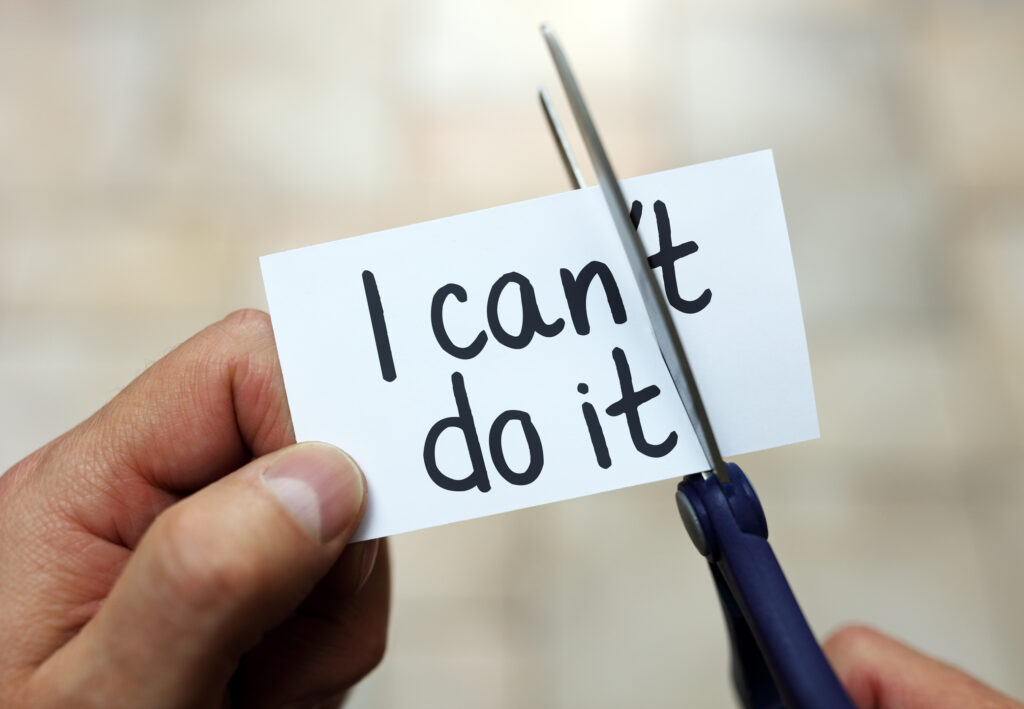
What can I do to manage anxiety, fear, and other strong feelings?
Below are some simple self-help tools you can use to build your own “coping toolbox”. These tools train your mind and body to relax. You learned about most of them during the History, Healing and Hope tour. We put them here so you can review what you learned, play with the tools, try them and see how they work for you, and even share them with friends and family. Remember, practice these tools every day even when you are not feeling fear and anxiety, so when you are, you will be better prepared to use them.
1. Bounce Back from Stress Toolkit, document by Cynthia McDonald, Ph.D., for all ages (Ukrainian, English)
2. The Butterfly Hug, video by TYF Support Group for all ages (In English, but can adjust settings for Ukrainian subtitles) https://www.youtube.com/watch?v=iGGJrqscvtU
3. 4-7-8 Breathing, video by GoZenOnline for teens and adults (In English, but can adjust settings for Ukrainian subtitles) https://www.youtube.com/watch?v=szytMbnD5v0
4. 5,4,3,2,1 Grounding Technique, video by Partnership in Education (In English, but can adjust settings for Ukrainian subtitles) https://www.youtube.com/watch?v=30VMIEmA114
5. Guided Imagery for Relaxation, audio by Cynthia McDonald, PhD. Select to download: English, with music or English without music.
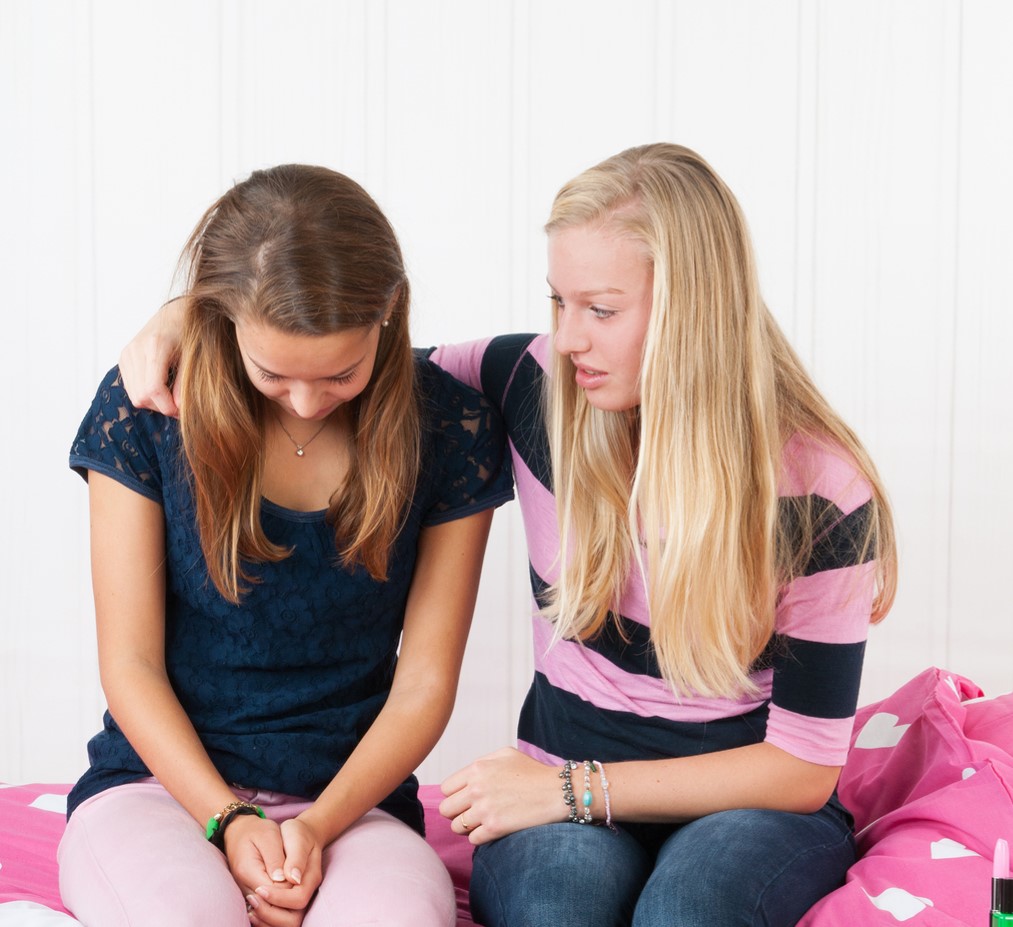
6. Heartbeat Meditation, video by Partnership in Education (In English, but can adjust settings for Ukrainian subtitles) https://www.youtube.com/watch?v=3iUf73v92lI
What can I do / say to help others who are feeling distress?
7. How to Help Others in Distress, pocket card by PsychologyTools Ltd., for teens and adults (Ukrainian, English)
What can parents, teachers, and other adults in the community do to help themselves and to help children who have experienced trauma?
8. Moments of Refuge, Mindful Meditation Recordings by SOS Ukraine for teens and adults (Ukrainian) https://www.momentsofrefuge-ukraine.com/uk
9. Helping Children Cope after a Traumatic Event, document by The Child Mind Institute (for parents, teachers, and adults) (Ukrainian, English)
10. Teaching 4-7-8 Breathing to Young Children, video by Children’s Hospital of Philadelphia (In English, but can adjust settings for Ukrainian subtitles) https://www.youtube.com/watch?v=Ub0i2pBpI-8
11. Effects of Trauma, document by PsychologyTools Ltd., for adults (Ukrainian, English)
FOOTNOTES:
1. Growth After Trauma, by Richard G. Tedeschi, article, Harvard Business Review Online Magazine, July-August 2020
